SAILING NOTES FROM THE SOUTH PACIFIC FOR OCEAN VOYAGERS
Sailing Notes from the South Pacific for Ocean Voyagers










SY WHIRLWIND 🇺🇸 Maurisa, Mike, Russell & Josea – Alajuela 48’




EXPANDING POSSE PERKS: YACHT PORT CARTAGENA, SPAIN💰 Save real money at Marinas with discounts
ANNOUNCING: NEW MARINAS SIGNING ON WITH THE OCEAN POSSE
EXPANDING POSSE PERK:💰 Save real money at Marinas with discounts


SV QUESO GRANDE II and Captain Dietmar kicked off the first Ocean Posse event in Yacht Port Cartagena, Spain!
Dietmar says: Thank you Sherri for all the event support and promotion to the international cruisers who came! AND THANK YOU LANCE FOR SOME SUCCULENT RIBS !!!
Sherri from SV QUESO GRANDE II says: Great fun, great cruisers, and great grilled meat by my darling husband Lance.

Currently, the Ocean Posse has ????some number of marinas in ????some number of countries bla bla bla. This represents great savings bla bla bla
TRIP REPORT: COLUMBIA INLAND
TRIP REPORT: COLUMBIA INLAND
WITH MV NEXT CHAPTER
MV NEXT CHAPTER sailed from Shelter Bay Marina in August to Cartagena, Colombia. They explored the city and then travelled inland off the boat. Their photos and enthusiastic report of their time so far in Colombia follows:

Colombia exceeded our expectations in every way! We weren’t 100% sure what to expect but what we found was incredible people, safe walkable cities, delicious food and affordable prices for work and goods.



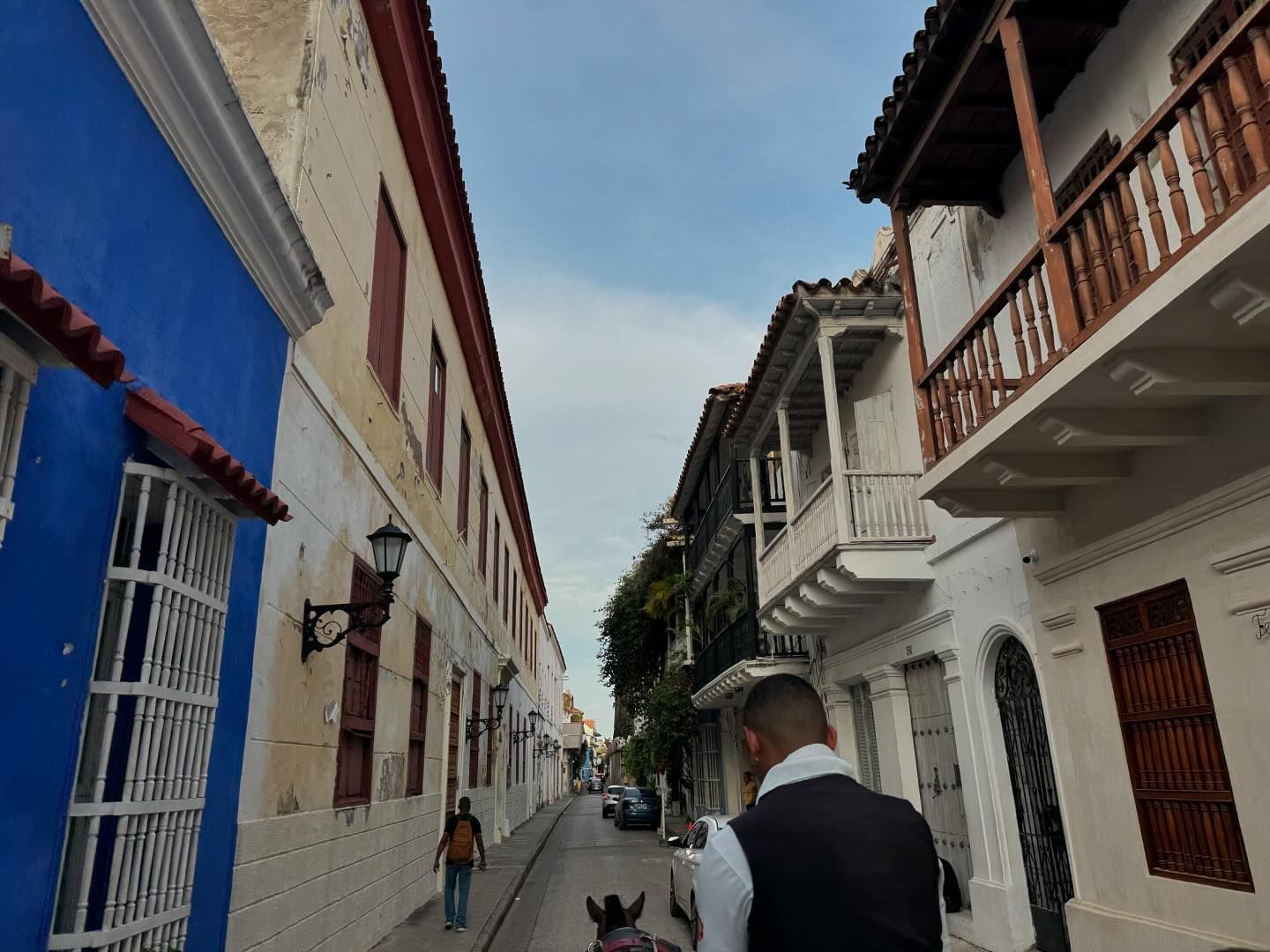
We stayed at Club de Pesca (they are a posse sponsor and a great marina) if you message their WhatsApp, Maricela Speaks great English and can help with your reservations) book very early as their marina is small and space fills up quickly.
Also at Club de Pesca is phenomenal workers! We had our bright work completely redone, some small fiberglass repairs, a wash and wax. Javier and his team were the best we have ever worked with! If you are stopping there and want his contact info I would be happy to pass it along
We also took side trips (it’s super affordable to fly within Colombia) to Medellín and Bogota. Both cities were incredible, rich culture so much to see and do!
Checking into the city/country was also pretty easy- Jose our agent was $300 and handled all of our paperwork and brought the officials to our boat, applied for our cruising permit and TIP. You have to check into and out of every major port in Colombia but it’s pretty quick and easy.

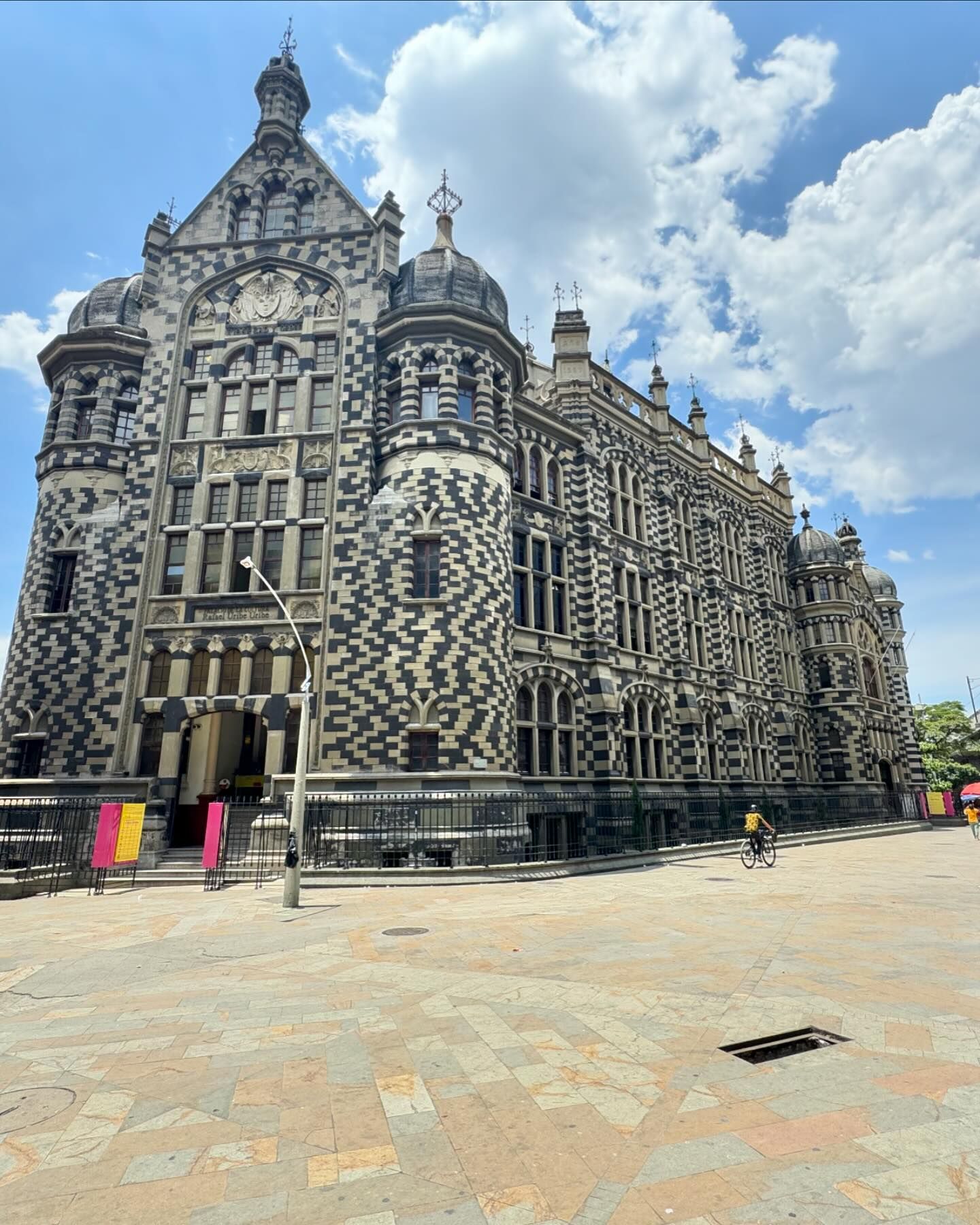


Hope this helps other boaters feel comfortable stopping into Colombia! It’s in my opinion and must see country.

MY NEXT CHAPTER 🇺🇸 Chris & Shawna & crew - Selene 59′
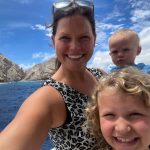
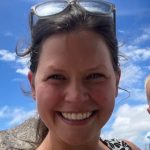
Fair winds MV NEXT CHAPTER, thank you for sharing your inland adventures!
SHARING YOUR ADVENTURES
is the heart and soul of the Ocean Posse
Please share pictures of your adventures, your award entries, your breathtaking sunsets, and picturesque anchorages on our group communications platform for others to enjoy in real time and/or email Maurisa at editor@oceanposse.com to share in the upcoming newsletter. Maurisa is a sailor among us. She is part of the Ocean Posse crew and enjoys writing fun and helpful updates to the Ocean Posse.
The Birth of the United States Navy
THE BIRTH OF THE UNITED STATES NAVY:
A Mad Idea that Stuck.
By Mike Descheemaeker of SV WHIRLWIND

Both the Revolutionary events in Massachusetts in the year of 1775 and the need to keep the British Army under siege in Boston led to the early formation of the US Navy. The British were surrounded by the Continental army in Boston and the people of the colonies wanted a voice and a say in the running of their colony. At this point the 13 colonies were only rebelling against the tyranny of the parliament and hoped the King would see that colonists were in the right and simply give them representation. While history has shown that kings do not view their reign as tyrannical, time and time again people hope for more autonomy without a fight. Many hoped war was not the answer and yet obtaining their goal was otherwise quite complicated. The colonies were dependent on Britain in many ways and Continental Leadership knew that challenging the Royal Navy on the high seas was, as Samuel Chase of Maryland said, the Maddest Idea; they could be no match. In spite of the madness of the idea, the congress slowly debated whether or not there was a genuine need for a true American Navy. The congress was concerned that the creation of a navy would be seen as an act of aggression or a move toward sovereignty a threat to the crown. While the debate wore on the continental congress gave the commander of the Continental Army, George Washington, authorization to spend money as he saw fit in an emergency. As it was, Washington saw fit to secretly and, at first, privately funded the arming of two schooners, the Hannah and Warren, for potential military purposes.

Working with the New England maritime community to ready two ships of merchant service for naval service quickly turned into more than Washington anticipated. With lack of gunpowder and cannons combined with a New England sense of independence and Sea Lawyer obstinance among the volunteers who manned these ships, it’s amazing they were able to accomplish what they did. Using the small rocky harbors to the north and south of Boston Harbor, Washington's ships were able to rush out and intercept a merchant ship arriving from England or Canada sent to supply the besieged British Army in Boston proper. The British army and loyalist citizens of Boston were slowly whittled down to starvation rations; they began tearing down structures and stealing furniture inside abandoned rebel leader mansions to gather fuel for cooking fires. Firewood and fresh food was being imported from Maine and Nova Scotia because of the siege. These early schooners of the continental army had limited oversight and often took advantage of their interceptions as opportunities to enrich themselves with the spoils of war thereby making themselves no more than privateers with captain and crews. In the beginning they captured as many friendly ships as they did enemy ships. At the time with the lines of independence being still blurred it was difficult to determine what was a legal prize. Many of the core families of the initial rebellion were involved in merchant shipping on the New England coast and into the Caribbean. Needless to say Washington had more than one awkward meeting with a angry rebellion financier questioning why Washington’s secret navy had captured one of their legitimate merchant ships.
After the first two schooners started to see some success in capturing actual military supply vessels and independence seemed the only path forward the congress approved a navy. Washington quietly let them know what he had been up to with his secret navy. Some of the challenges the young Navy faced was competing with privateers and there financiers for capable ships, commanders and armament for effective naval combat. It’s rather amusing to see the work orders from the captain of one ship requesting top masts and yards, studding sail spars, and a quiver of sails needed to capture or flee from a well canvased enemy. The simple working sail plan of a New England fishing schooner was not adequate for a military vessel facing the dreaded Royal Navy and its well honed ships and crews.
After a rough and quiet start, the young US Navy had, by wars end, fitted out close to fifty ships and captured two hundred enemy ships some with military munitions bound for the British war effort. With really no chance of going broadside to broadside against the British, snatching a prize lost in the fog or separated from its escort was a common tactic in the early days. Captain John Paul Jones and others did have success in the North Sea in direct action against the British towards the wars' end. This action gave Jones title to the first American Naval vessel to force an enemy naval vessel to strike her colors.


In 1778, France allied with the United states and joined in the fight for independence from Great Britain. Subsequently, the small but growing US Navy was joined by a large French Naval force. This alliance made way for a gradual change in direction for the colonies. Finally, with a fleet of 36 French naval ships, a blockade of Yorktown from the sea, and a combined French and US army Cornwallis was forced to surrender. This surrender brought a decisive victory for the United States an end to the Revolutionary War. In 1783, the Paris Peace Treaty was signed with Great Britain. This treaty recognized the United States as a sovereign nation.
Upon Independence, the fledgling US Navy was quickly regarded by some as not necessary and definitely expensive. This new nation, however, was ready to get out in the world, cross oceans, and continue trade with other nations. The Navy took on a new task with the turning of the tide in French - US relations. Circumstances in France quickly changed with the French Revolution which brought a change in heart amongst the former allies in the American Revolution. The French Revolutionaries were using public guillotines to chop the heads off aristocrats to make their point and get their way.

Washington and Hamilton were appalled by the bloodshed of the French approach to revolution. Concurrently, Jefferson and Madison looked past the gore and considered themselves loyal allies to French. The US congress stood with the Washington and Hamilton opinion and decided not to uphold the alliance with France after the American Revolution. The US Congress declared that the new French government with their violent actions was not the government the treaty was originally signed with. This departure brought the US into Qusai conflict with French Naval vessels and privateers in the Caribbean. The US Navy quickly became indispensable. The French preyed on US merchant ships doing trade in the Caribbean with the British. In 1796-1797 the French captured 316 American merchant vessels with a loss of 12-15 million dollars in goods and vessels. In 1794 congress approved the creation of six heavy frigates to protect American shipping abroad. Unfortunately the frigates came off the ways slowly and only served in the latter years of this Quasi-War with France...too late to stop a French privateer from snatching up a prize off the coast of New York in May of 1798.
The Frigates United States, Constellation and the famous Constitution were the first three ships off the ways in 1797 with three more to follow in the following years, the frigates President, Congress, and Chesapeake. These six ships are regarded as the official first ships of the United States modern day navy. Fortunately, for American ship builders having the forests of the new world at their disposal was a great advantage for trying to compete with Old World Naval powers. The American shipbuilders were matching nearly unlimited wood sources with superior craftsmanship blended by naval architects with new visions of speed and strength. Knowing that six ships would be no match for the large navies of Europe these six ships were built heavy for defense and the ability to carry a lot of cannons but with big rigs to maximize speed.

The USS Constitution which is still in active service took over 60 acres of forest to construct. Her nickname old Ironsides came from her ribs being so tightly spaced that it’s difficult to place a hand between them. With thick oak planking laid over these ribs cannon balls would just bounce off. Like many a Navy build, these first naval ships were over budget and late on delivery especially for the beginning of the Quasi-War with France. However by 1798 the first three frigates were sent to stations centered around commerce hubs in the Caribbean. The frigate captains were given orders not to engage with the French naval ships. They were to capture the French privateers who patrolled the surrounding waters. Eventually, the early naval frigates saw action with the French on multiple occasions. By 1800-1801 the Quasi-War was brought to an end through treaties and renewed trade agreements. The fledgling navy was sent into common service and sent home to sit idle at the dock once more.
Meanwhile, the young nation of the United States was tired of paying ransom to the Barbary Pirates on the northern coast of Africa Tunis, Tripoli and Algiers. For hundreds of years the Barbary Pirates or corsairs were in the habit of raiding mostly Christian villages in Spain and Italy and enslaving those they captured. Their treatment was less than wholesome and most of the captives lived out their lives enslaved. Later on, the pirates preyed on merchant vessels plying the Mediterranean and the Atlantic around the Straits of Gibraltar. Once captured these vessels would be taken back to the Barbary strongholds, their ship and crew enslaved and held for ransom. Lucky crews were freed from the horrors of enslavement when the ships owners paid up. Unlucky crews were left to rot. This became so common that the British and other European nations paid a flat rate to the pirates so they would leave their ships alone. America, being young and poor, couldn’t afford to make the payments so American shipping soon became prey for the Corsair pirates.
Morocco actually sent the yet to be formed United States a trade agreement in 1778 but apparently everybody in power was too busy fighting a war and organizing a government that they failed to acknowledge or respond to this request. In 1784, acting on behalf of the Sultan of Morocco, US merchant vessel Betsy was captured and used for leverage to bring the US to the bargaining table. A free trade agreement was struck and all seemed well except the Corsairs were basically a mercenary force that worked for the different Sultans along the Mediterranean. In Algeria things were not going well for the US. For a decade two US ships and there crews were held captive in horrific conditions until some sort of release was secured. Many in power in the US didn’t want to continue to pay the tribute money because they figured it would just keep going in the wrong direction which it constantly did. The monetary tribute amounts were constantly increased with added demands like Algiers requesting the United States build them a naval vessel. All of this was occurring in much of the same time period as the Quasi-War with France so as things really started to come to a head in the Mediterranean the young Navy was really looking ready to handle this global dilemma.
In 1800 Captain William Bainbridge on the USS George Washington arrived in the Port of Algiers with tribute money and other gifts for the Dey. After getting the anchor down they were informed that the ship would be used to transport the Dey around the Mediterranean to conduct his business. Now the ship had already sailed into the harbor under the protection or threat of the large coastal batteries served by the Deys troops. Bainbridge felt like he didn’t have much choice so he essentially surrendered the vessel to the Dey's demands. Back home in the US the nation was not happy about this turn of events. This was the beginning of the end for the US sending tributes to the Sultans. In fact, President Jefferson, with approval from congress, sent the Navy in force.
In 1803 commodore Preble arrived in the Mediterranean with the Constitution and the rest of his ships. Unfortunately, the new fleet consisted of heavy deep draft vessels which had a difficult time negotiating the shallows and reefs that protected the ports of Northern Africa. In an ambitious action Bainbridge in the USS Philadelphia chasing a Corsair vessel ran hard aground off of Tripoli. Under attack from small gunboats of the Tripolis and unable to refloat the vessel Bainbridge surrendered. Thinking they had flooded the vessel beyond salvage they were horrified to see the USS Philadelphia float in to Tripoli harbor from there new accommodations in the prison. There they sat for almost two years. The Americans knew they needed to recapture or scuttle the Philadelphia before it could be repaired and put back into service against them. So in February 1804 lieutenant Stephen Decatur with his crew brought a captured Tripoli merchant ketch renamed USS Intrepid into the harbor with the assistance of Sicilian pilot who knew the local waters. They trimmed the rig down to make it look like a local trading vessel and roughed it up to make it look like they had been through a bad storm. They brought the ketch right along side the Philadelphia under the cover of darkness and attacked the small guard crew. However, they were unable to cut out the Philadelphia so they set charges and destroyed her at her mooring.
The fleet continued blockades and bombardments of the harbors to some effect but it was a land force of US Marines backing the exiled brother of the ruling Pasha of Tripoli that turned this tide of war. From Alexandria the forces of US marines, led by the former US consul to Tunis, William Eaton, and a mercenary force of the exiled Pashas brother were marched along the coast to capture Derna, Benghazi and eventually Tripoli. With success in Derna the Pasha surrendered to the land force and the constant naval bombing from the USS Constitution.
This, however, did not bring an end to hostilities in the Mediterranean because the British were not happy with the foot hold that the United States was gaining in trade. Britain used their position to try and squeeze the young nation out of the game. Determined to defend their trade position, the US sent another force led by Stephen Decatur which defeated the British backed Algerian fleet. Subsequently, the United States was able to achieve a period of somewhat free trade into the Mediterranean for a time. These actions by the British were fueling the flames of the next war on the horizon in 1812. And so it was that by this time the United States Navy had proved herself as a valuable and effective tool for the United States to defend, expand, and stand her ground to become a thriving nation.
SEASON 8 AWARD ENTRIES: GOOD SAMARITAN OF THE YEAR
SEASON 8 AWARD ENTRIES:
GOOD SAMARITAN OF THE YEAR

MV MARTINI 🇺🇸 Mary & Bryan - Nordhavn 64′

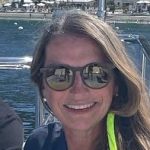
Thank you SV MARTINI, entanglement is a terrible and real threat to many marine animals including sea turtles...you made a difference for that turtle!
https://conserveturtles.org/information-sea-turtles-threats-commercial-longline-fisheries/
For the more scientifically minded readers this article is "A global review of marine turtle entanglement in anthropogenic debris: a baseline for further action" : https://www.int-res.com/articles/esr2017/34/n034p431.pdf
OCEAN POSSE IS ACCEPTING SEASON 8 AWARD ENTRIES:
SUMBIT YOUR ENTRIES OR NOMINATE A FRIEND.
SEND PHOTOS TO MAURISA AT EDITOR@OCEANPOSSE.COM

OCEAN POSSE SEASON 8 AWARD CATEGORIES:
BIGGEST FISH CAUGHT*
PICTURE OF THE YEAR
YODA OF THE YEAR
SPEEDY AWARD – SEVENSTAR AWARD
THE CAPTAIN RON AWARD
MOST UNWELCOME VISITOR ONBOARD
HIGHEST WIND RECORDED
SPIRIT OF EXPLORATION
GALLEY GOD(ESS)
GOOD SAMARITAN OF THE YEAR
BOAT YOGA POSE OF THE YEAR
COURAGE AWARD
SAND CASTLE AWARD

OVERSEAS AND ONLINE: PASSPORT RENEWAL & VOTING
OVERSEAS AND ONLINE: USA PASSPORT RENEWAL & VOTING
As a US citizen, passports and voting rights are very important. Both can be kept up to date from afar...here's how:

After a two month beta trial, The United States Department of State has recently announced that Americans can now renew their passports online. This is new and additional staff has been hired to process the online system. The two caveats are for using this service: You must be located in the United States and your passport may not be expired by over 5 years. As of now, it is unclear if this new avenue of renewal will speed up the process overall or not. We will have to wait and see.

Americans have elections coming up locally and nationally. Are you registered to vote? Do you know that US Citizens living abroad can register to vote from overseas?

There are several online resource to help US citizens understand how to register to vote and vote from wherever they are when the time comes. Some useful sites include:
- https://www.overseasvotefoundation.org/welcome-overseas-vote-from-abroad
- here you can learn all about overseas voting, what it means and terminology.
- https://www.nytimes.com/2020/08/28/smarter-living/american-vote-from-abroad.html
- here you can learn how to register and vote overseas
- https://www.fvap.gov/citizen-voter
- here you can register to vote from overseas and directly link to your state site with your registration and state specific options
- https://www.votefromabroad.org/
- Here you can also register or see a very clear state by state graphic of state voting acceptance procedure.

SUN POWERED YACHTS SPONSORS THE OCEAN POSSE
☀️ SUN POWERED YACHTS ☀️
⛵SPONSORS THE OCEAN POSSE⛵
|
We are exited and pleased to sponsor the Panama Posse with a special 10% discount off SunPower solar panel bundles. Just use promocode PANAMAPOSSE at checkout www.sunpoweredyachts.com/shop and start enjoying clean & quiet solar aboard your boat.
We also offer free consultations so please email or call and let us help you go solar today. PRODUCTS
|
|
|
|
|
Sun Powered Yachts
T: +1 808 825 2670
Lyall is from the UK and has travelled to 50 countries backpacking and sailing. With a background in Hospitality and Event Management he found sailing in 2004 has logged over 55,000 miles and qualified as an RYA Yachtmaster Ocean.
Katie is from Maine and has been working in the solar industry in Hawaii for over a decade, most recently for Sunspear Energy. Her knowledge of solar products and system design will be an asset to your yacht’s system. |
|
|
Based on our time and experience sailing, on short trips and living at sea, we have created a Power Usage Chart below. You can see more details on what each system could power on your weekend or live aboard sailing adventure. Create your own power usage table and see what your power needs are aboard your own yacht then choose the number of solar panels accordingly |
|
|
|
|
|
SV REMEDY DOUBLES BACK OVERLAND TO NICARAGUA
SV REMEDY DOUBLES BACK OVERLAND TO NICARAGUA
WARNING: Do not read while hungry or thirsty (for Rum or Adventure)

Karl and Natalie Leibensperger, from SV REMEDY, are currently exploring Nicaragua overland from Costa Rica and shares some details and highlights of their experiences along the way:
Due to time constraints we were not able to visit the Port of Puesta Del Sol in Northern Nicaragua but instead headed directly to Costa Rica. While staying in Marina Papagayo we planned a 10 day trip to Nicaragua with Va Pues Travel. The company organizes custom private tours of Nicaragua. Our trip started with a transfer from Liberia to Peñas Blancas. There are several transfer companies and the prices range from $85 to $120 each way. We used Best Ride Costa Rica, +506 8629 0242 with a rate of $85 each way. The transfer takes about 90 minutes. It is a pretty interesting drive north to the border. The craziest thing is that there is 9km of backed up semi trucks that wait days to get into Nicaragua. We drove most of the 9km on the wrong side of the road swerving in and out of traffic. It made for an eventful ride.
Once at the border the Costa Rican immigration office is within a few steps of where your transfer is able to drive. Our English speaking border agent took our passports, instructed us to pay our exit taxes at a bank machine ($8 US PP) and then once paid he stamped our passports and sent us on our way towards Nicaragua. There is a marked walkway to the border and the entire walk is about 300 meters. Before getting to the Nicaraguan immigration office you must show your passport to an official at a check point. They are looking for your exit stamp from Costa Rica. The Nicaragua immigration office is a huge blue and white building, really impossible to miss. You will need $1 US PP cash to get in the door. Once inside, the immigration official will need your passport, your hotel name, and your profession. The cost is $13 US PP in cash. They will give you two official papers that are needed to exit the country. Once this is completed all luggage is placed through an X-ray machine and then you are on your way. Welcome to Nicaragua!
We had a tour guide waiting for us but there is an Enterprise Car Rental at the Nicaraguan border. I'll add that there is also one on the Costa Rican Border also. Our first stop was Rivas, here we caught a very crowded transport ferry to Ometepe Island.
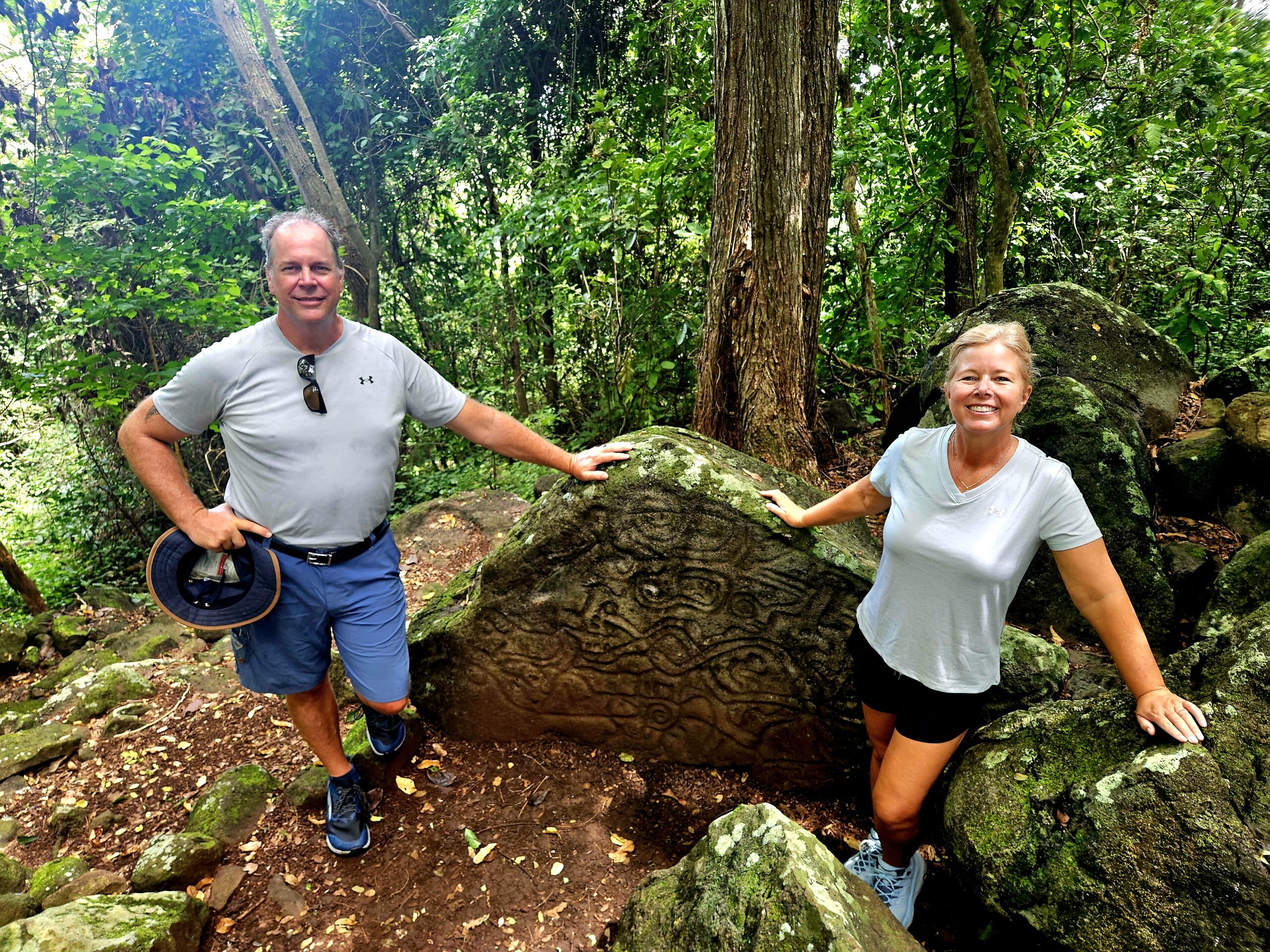

After the return ferry ride back to Rivas we moved on to the Capital City of Granada. We stayed at the Hotel Plaza Colon, which is a beautifully refurbished colonial house overlooking Granada's Central Park. Bring your bathing suit to cool off in their wonderful center court pool.
On the drive to Granada we stopped in Catarina for a ceramic pottery factory tour. The indigenous population has handed down this artwork to the current generation and it is their main livelihood in this area. The pottery in some of the shops is very detailed and exquisite. We did buy several pieces for our home in Florida.

distance is Lake Nicaragua. The picture was taken from the city of
Catarina, which is famous for their handmade pottery. The pottery is
absolutely beautiful. We purchased quite a few pieces that will be
shipped to the US.

Granada is a Colonial City with a rich history. If you visit Granada I highly recommend having a city tour, as without a guide I would not have learned as much of her History. Since it was so hot we cheated on our walk and hired a horse and carriage for $20. I told Karl it was the best $20 I've spent in a long time. An interesting stop was at a tile factory that has been in business since 1905. They make all of the colorful tile around the city, both in buildings and on the sidewalks. They were kind enough to show us their tile making process during our impromptu stop.


Two suggestions.


After two nights in Granada our trip led us to Estili. It is the location of most of the cigar factories in Nicaragua. Karl's goal was to visit the Padron Cigar Factory but to his disappointment they are extremely private and do not have tours. In fact, they do not sell their cigars in Nicaragua. They are all exported. (So, we found a) cigar factory tour in Estili and (found) some good quality cigars to bring back with us.
(We had) an amazing tour of AJ Fernandez Cigar Factory. Mario was our English speaking guide. After working for AJ Fernandez for 7 years, he has learned and is able to explain the cigar process in detail. His background is that he has an Agriculture Degree, so he can answer specific questions about the process that I don't think you would get in other locations. It takes about 5 years and 300 hands to produce one cigar. The facility is enormous and the process is just as complicated as making wine or whiskey. He used those analogies throughout the tour. I was not aware of the detail that goes into each batch of cigars. The tour lasted about an hour and I would rate this as one of our top factory tours. Technically, purchasing cigars is not possible, but in Nicaragua everything is possible. Estili is a bit out of the tourist zone but completely worth the stop.



This is just one of the rooms that processes the tobacco. This is sorting room for the tobacco that becomes the wrapper.
As of this publication, Karl and Natalie are continuing north to Leon, Nicaragua. Karl and Natalie finish by sharing:
As Posse members we are making our way to Flor de Caña hoping to purchase some well aged rum. (Excellent idea!!)
Southern and middle Nicaragua have been beautiful and I am thankful we are able to spend 10 days touring this wonderful country.
 Karl & Natalie Leibensperger - 2019 Leopard 45
Karl & Natalie Leibensperger - 2019 Leopard 45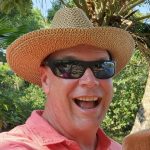

THANK YOU SV REMEDY FOR SHARING YOUR ADVENTURE ALONG THE WAY!
Ocean Posse Members, please share your stories by sending them to editor@oceanposse.com.
Maurisa, the editor, is always happy to receive your stories and share them out. Together we can inspire one another!
CENTRAL AMERICA CELEBRATES INDEPENDENCE FROM SPANISH RULE
MEXICO, GUATEMALA, NICARAGUA, HONDURAS, EL SALVADOR, AND COSTA RICA CELEBRATE INDEPENDENCE FROM SPANISH RULE
SEPTEMBER 15TH, 1821

September 15, 1821 honors Mexican Independence and the signing of the Act of Independence of Central America, also known as the Act of Independence of Guatemala in which all these nations declared their independence from the Spanish Empire. (Panama gained their independence separately later in 1821.) This landmark day is celebrated as Independence Day in all of these countries today. Festivities Include flags flying, parades, fireworks, and traditional food, music, and dancing.


Hernan Cortez, arguably had the most dramatic impact of all the Spanish explorers especially in Mexico and Central America. Born to an impoverished noble family, he sought a life of adventure and riches in the New World. He trained as a notary before sailing to Hispaniola (modern day Haiti and Dominican Republic) as a colonist in 1504. After becoming the colony’s notary, he played a key role in the conquest of Cuba in 1511. In 1518 he was elected captain of the third expedition to what is now Mexico. He had some bad relations with the governor of Cuba who upon Cortes' departure attempted to recall the expedition. Cortes ignored this and embarked on the voyage with 500 men, weapons, and horses to conquer Mexico. Upon arrival, he befriended some natives, made enemy's of others, and sired his first born with a native woman named Dona Maria who also served him as an interpreter.

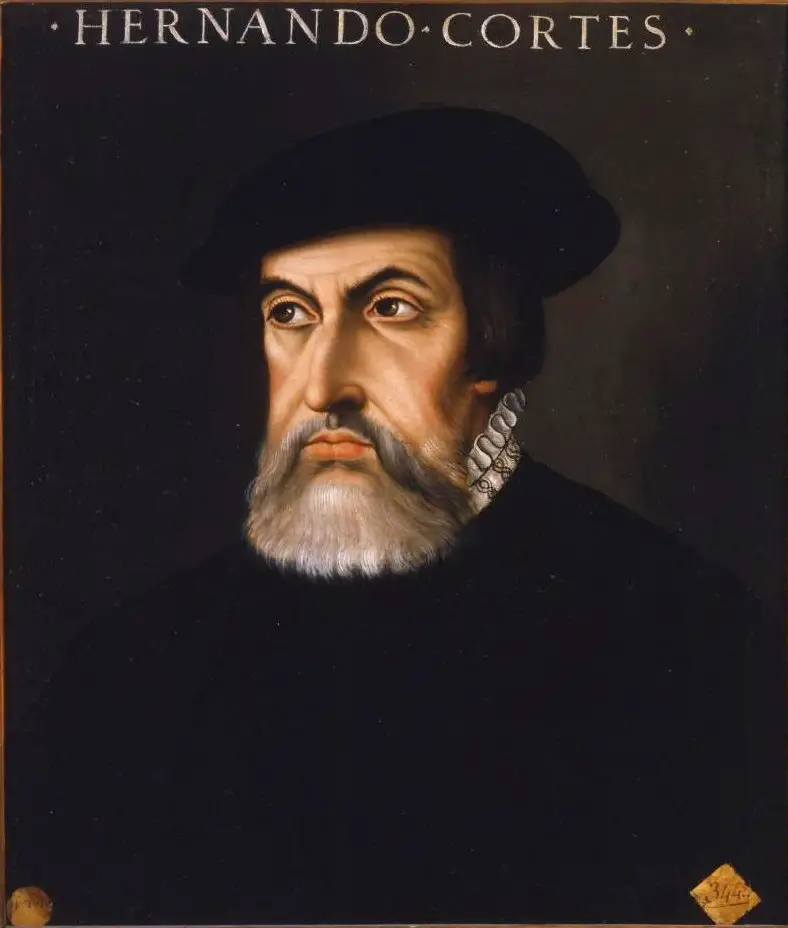
And so it was that in 1519, Spanish conquistador and expedition leader, Hernan Cortés, made landfall with men and horses on the shores of what is now Tabasco, Mexico. He and his forces saw to the demise of the Aztec Empire, made their way inland to Mexico City, and seized power. While the indigenous people resisted mightily, the Spanish were relentless. The diseases and weaponry they brought overtook indigenous populations from Mexico south. Cortés thereby brought a large portion of what is now Mexico, and soon the rest of what is now Central America, under the rule of King Castile. Thus began the first phase of Spanish colonization of the Americas. Cortes' second in command, Pedro de Alvarado was commissioned to settle lands further to the south. One by one, Alvarado colonized the areas that are now known as Guatemala (in 1523), Nicaragua & Costa Rica (in 1524), El Salvador (in 1528), and Honduras (in 1528). These countries, including what is now the state of Chiapas (in 1609) became known as the Captaincy General of Guatemala for which Spain's King Philip III held dominion.

After just over 300 years of Spanish rule, in the early 19th century global changes began to unsettle Spanish power making way for leaders in what is now Central America to declare their independence from Spain. In Europe, Spain was engaged in the Napoleanic wars with took their attention away from their colonies across the Atlantic. Further, with inspiration from Enlightenment thinkers, Mexico's fight for independence from Spain, and the American colonies' independence from England, and the French Revolution, José Cecilio del Valle, a Honduran lawyer, wrote The Act of Independence document bringing together a delegation of leaders from what is now Guatemala, Nicaragua, Costa Rica, El Salvador, and Honduras. They gathered in Guatemala city to create and sign the Act of Independence of Guatemala and to achieve sovereignty from Spain.

Soon after this declaration of independence these countries were briefly annexed by the newly independent Mexico. In 1823 delegates gathered again to form a federal republic- the United Provinces of Central America. The delegates drew up a constitution that provided leadership and regional autonomy. Overtime, conflicts arose between the separate nations; the United Provinces of Central America eventually fell apart and the leaders of each distinct nation once more declared their independence.
National celebrations today have grown and can begin before September 15th and go through the month celebrating national pride, independence, culture and heritage.

To read more on this subject this article covers quite a lot: https://shunoutdoor.com/article/why-does-central-america-celebrate-independence-day
This article is for the visual learners among us: https://studylib.net/doc/10144677/independence-movement-latin-america
MUST SEE: Tairo Atoll – French Polynesia
MUST SEE: Tairo Atoll – French Polynesia –
Tairo Atoll – French Polynesia –
one of THE SEVEN TUAMOTUS IN THIS UNESCO Biosphere Reserve

The Tairo Atoll is part of the UNESCO Tuamotus Biosphere Reserve and was the last of the Tuamotus to be recorded and charted by European explorers. The Biosphere Reserve was established in 1977 and consists of 7 low islands of coral or atoll origin: Aratika, Fakarava, Kauehi, Niau, Raraka, Taiaro, and Toau. These atolls are very different from each other in size, shape, openness to the ocean, population and activities. Its character is unique: there are small closed lagoons such as those of Taiaro and Niau, the former being over-salted while the latter is brackish. And large lagoons open to the ocean such as Fakarava, which has the largest pass in French Polynesia 1,600 metres wide.
The Tairo Atoll is particularly fascinating as it is completely closed off to the ocean. While there may not be any permanent human residents there are many plants, mollusks, and fish. In 2022, a team of adventurous scientists from all over the world led by the Okinawa Institute of Science and Technology ventured to Taiaro to investigate this unique atoll. The interior lagoon is warmer and saltier than the surrounding ocean making it an interesting laboratory for interdisciplinary scientists studying a broad range of subjects form endemic species, to evolution, to adaptation, to climate change and more. For an accessible explanation of this mission, check out the description and video in this article:
https://www.oist.jp/news-center/news/2023/3/10/tiny-atoll-pacific-ocean-offers-glimpse-warmer-world
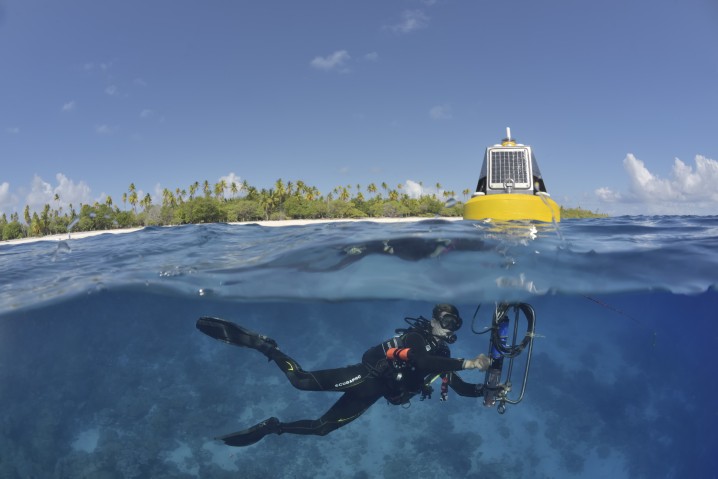
According to UNESCO, "Biosphere reserves are ‘learning places for sustainable development’. They are sites for testing interdisciplinary approaches to understanding and managing changes and interactions between social and ecological systems, including conflict prevention and management of biodiversity. They are places that provide local solutions to global challenges. Biosphere reserves include terrestrial, marine and coastal ecosystems. Each site promotes solutions reconciling the conservation of biodiversity with its sustainable use. Tairo is one atoll of 7 in the Biosphere Reserve of the Toamotus. It's inclusion is a testament to the unique and phenomenal ecology of the Atoll. Scientists have found a wide range of species inside an atoll that has only seasonal exchange with the outer ocean and hope that the microcosm of Taiaro may present some insight into adaptations to climate change yet to come.

Atolls are evidence of geologic change and great mystery. Once upon a time volcanic islands erupted out of the ocean. Slowly, coral began to encircle and surround the islands. In the Tuamotus the volcanos sunk, collapsed, and/or eroded away into the ocean leaving a ring of coral surrounding lagoons. The Taiaro atoll is a ring-shaped island built up on an ancient volcano that has sunk into the ocean due to the drift of the Pacific Ocean floor. Taiaro is only visible because of the rim of coral that forms a barrier reef 5 km in diameter around the original volcano. The inside of the atoll has a sandy bottom punctuated with coral heads or 'bommies' that host marine flora and fauna. The landmass of the atoll itself is home to endemic birds mollusks, coconut palms and other plants. The biodiversity is impressive.
Nearby, the Tahanea atoll offers a very different experience from Taiaro in that one can enter the atoll and experience the inside and the outside. Perhaps Tahanea offers a glimpse of what Taiaro may be like.















